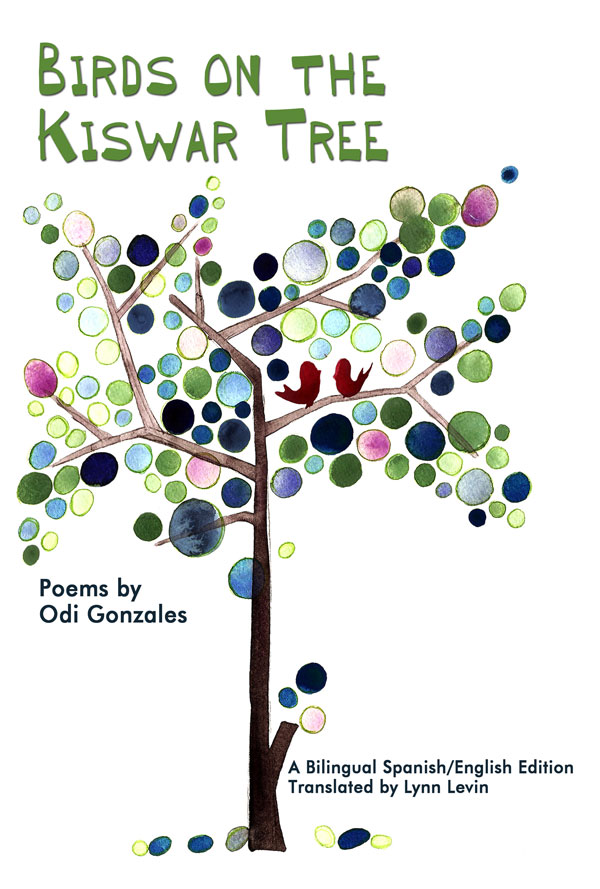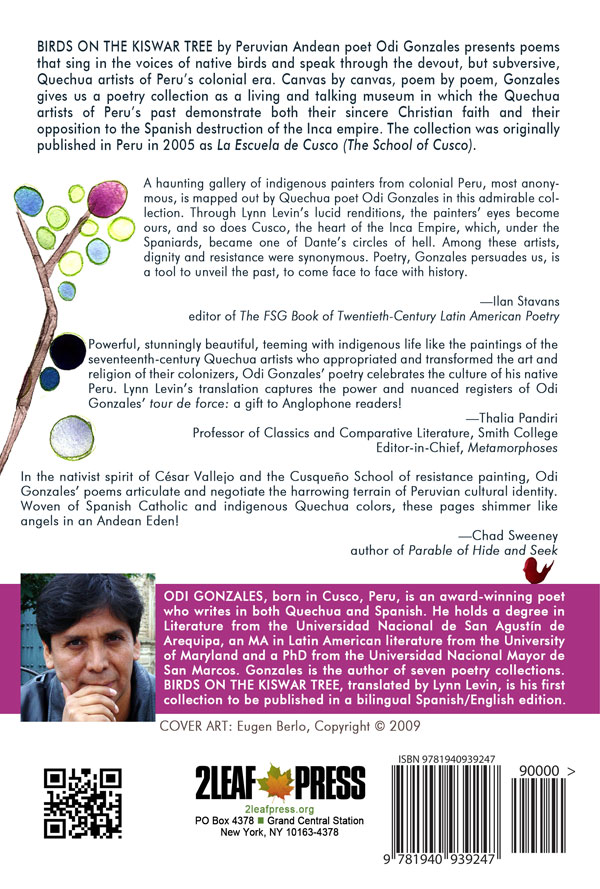BIRDS ON THE KISWAR TREE by Peruvian Andean poet Odi Gonzales presents poems that sing in the voices of native birds and speak through the devout, but subversive, Quechua artists of Peru’s colonial era. Their religious art provides the imagery for these astounding poems. In the Eden painted by one anonymous artist, Andean kiswar trees grow, native ñukchu flowers bloom, llamas graze, and parrots perch in the trees, and in out-of-the-way nooks of Andean churches, rebel angels hide, armed with harquebuses. Canvas by canvas, poem by poem, Gonzales gives us a poetry collection as a living and talking museum in which the Quechua artists of Peru’s past demonstrate both their sincere Christian faith and their opposition to the Spanish destruction of the Inca empire. Originally published in Peru in 2005 as La Escuela de Cusco (The School of Cusco), BIRDS ON THE KISWAR TREE stands as an elegant and richly imagined tribute to these indigenous and mestizo artists. By extension, it shows how artists may put forth their views when prevailing circumstances make outward protest a perilous option. Spanish to English translations by Lynn Levin. Cover Art: Eugen Berlo, Copyright © 2009.
Telephone: 646.801.9446





Reviews
There are no reviews yet.